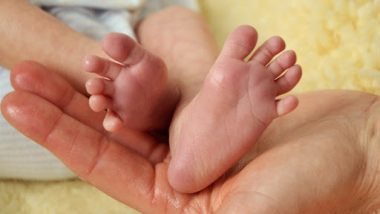If you are an expecting or a new parent or are thinking of starting a family, you must have heard or read about postpartum depression. But did you hear of postpartum anxiety? It is another mental health component which is often brushed off. An estimated 15 percent of new mothers suffer from postpartum anxiety. But how do you know you are experiencing the symptoms? Here is the difference between postpartum depression and postpartum anxiety. Read on till the end.
What Does Postpartum Depression Look Like?
You just had a baby, and it is a lot! You may experience the 'baby blues' which is referred to a period of feeling sad, irritated, annoyed and hopeless during the first couple of weeks following childbirth. These moody feelings can come and go in waves, but they usually resolve within a week or two after welcoming the baby.
So, how is postpartum depression different from the baby blues? PPD usually lasts up to a year after childbirth, and it generally requires treatment. PDD is complex and can look different from person to person. If you have PDD, you will have this intense feeling of being overwhelmed by motherhood. You may also feel emotionally numb and lose interest in your baby. Historically, postpartum depression is an umbrella term for a host of mood disorders including psychosis, OCD and anxiety. Post-Natal Depression in Dads Could Be Linked To Emotional Problems in Their Teenage Daughters.
How Are the Symptoms of Postpartum Anxiety Different from PDD?
If you have postpartum anxiety, you are not necessarily dealing with depression. You may feel you are in a constant state of agitation, arousal and worry. You may also have disturbing 'what if' thoughts about your baby. For instance, even if you know that your baby is safe with your parents while you run errands, you might be compelled to go through a safety checklist again.
Just like PDD, postpartum anxiety is treatable. However, many mums delay seeking help because they do not know how much anxiety is normal and how much is too much. International Day of Action for Women's Health 2020: Hygiene Tips Every New Mum MUST Follow to Prevent Bacterial and Viral Infections.
Can You Have Symptoms of PDD and Postnatal Anxiety Both?
Physical symptoms of PPD are close to those of perinatal anxiety. It typically involves changes in sleep and appetite, headaches, body aches, and dizziness. You can either predominantly have symptoms of depression with tell-tale signs of anxiety or the opposite. Mental Health Challenges Higher in Young Mothers: Study.
What Should You Do if You Have the Symptoms of Postpartum Anxiety?
Seek out professional help if you are not able to function appropriately because of the feelings of anxiousness. Ideally, your paediatrician will use screening measures to assess whether you are exhibiting symptoms of postpartum depression or anxiety. They will then refer you to a clinician who specialises in perinatal mood and anxiety disorders
You may think that distinguishing between the two really does not matter, but it does. Anxiety symptoms are not black and white for every person, and that is okay! But you should be able to describe your symptoms to the doctor so they can tailor a treatment plan to fit your needs.
References:
[1] Ali E. (2018). Women's experiences with postpartum anxiety disorders: a narrative literature review. International journal of women's health, 10, 237–249. https://doi.org/10.2147/IJWH.S158621
[2] Nakić Radoš, S., Tadinac, M., & Herman, R. (2018). Anxiety During Pregnancy and Postpartum: Course, Predictors and Comorbidity with Postpartum Depression. Acta clinica Croatica, 57(1), 39–51. https://doi.org/10.20471/acc.2017.56.04.05
(The above story first appeared on LatestLY on May 28, 2020 02:19 PM IST. For more news and updates on politics, world, sports, entertainment and lifestyle, log on to our website latestly.com).













 Quickly
Quickly





















